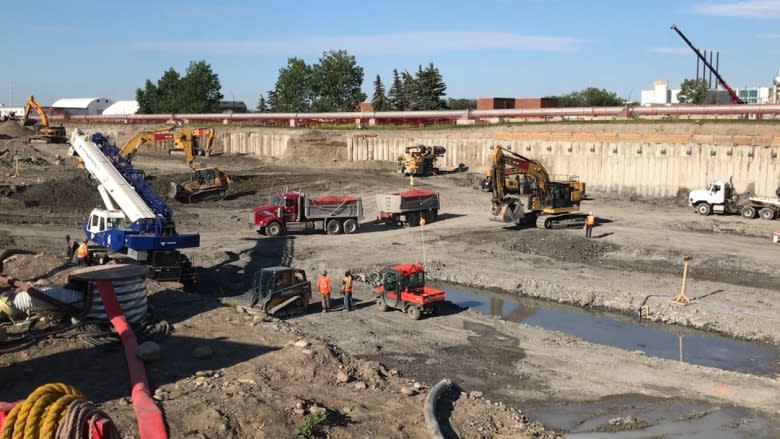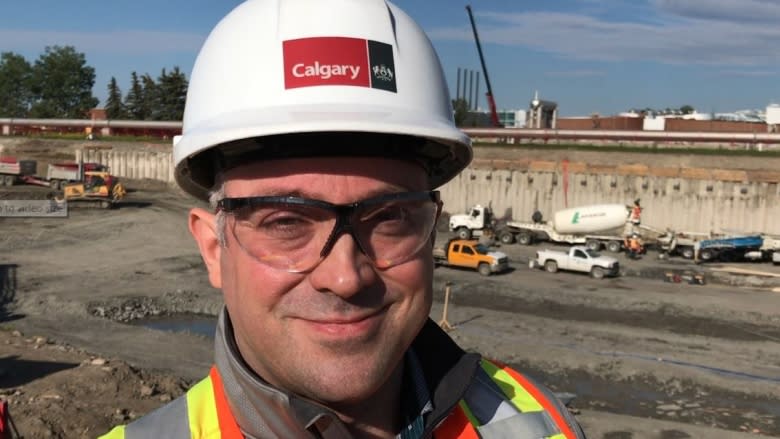The $1B Calgary megaproject you don't know about
As major municipal projects go, upgrading a wastewater treatment plant doesn't exactly have the cachet of a new LRT line.
But ensuring Calgary's largest wastewater treatment plant is ready for the never-ending population growth in this town is a key reason behind the city's decision to spend $1 billion over 10 years at Bonnybrook.
"It's wastewater treatment. It's not particularly a topic people like to talk about," said Andy Hughes, the project manager overseeing the Bonnybrook expansion.
But it's important.
"It's an essential part of our environmental protection responsibilities at the City of Calgary," said Hughes.
If you open a tap or flush a toilet in the northern half of Calgary, that wastewater goes to Bonnybrook. It has the capacity to handle a population of 946,000.
The rest of Calgary is served by the smaller Fish Creek and Pine Creek treatment plants.
When the current expansion at Bonnybrook is completed in six years, it will be able to handle wastewater treatment for 1.37 million people.
Plant basically a large construction site
For now, the construction site is a beehive of activity as 150 workers build the new Plant D expansion.
The new area will open in two stages, in 2022 and 2024.
The work at Bonnybrook, which started in 2014, goes well beyond just expanding its capacity though — and will cost $800 million.
Hughes said there are several other projects rolled into this expansion.
A new $95-million biosolids dewatering facility is already in operation.
It treats biosolids from Bonnybrook for agricultural purposes, as well as for use at the city's composting facility near the Shepard landfill.
During the winter months when there's less organic material coming in from green carts, trucks haul material from Bonnybrook to the Shepard facility so it can assist with the composting process.
Energy efficiency will increase
The city is also taking steps to improve Bonnybrook's energy efficiency.
It's doubling the capacity of the existing co-generation plant at Bonnybrook. The co-gen facility captures biogas from the solids treatment process to generate both electricity for Bonnybrook and steam to heat its buildings.
"What that will mean is that for certain periods of the year we should be able to power the plant entirely off the generated electricity from the biogas itself," said Hughes.
That will allow Bonnybrook to reduce its operating costs and lower its greenhouse gas emissions. The co-generation expansion will be completed in 2022.
Flood-proofing part of the work
Flood protection upgrades are being done to ensure Bonnybrook isn't affected again like it was by the 2013 flood.
The plant suffered $13.5 million in damages.
Some of that damage was caused by overland flooding, so a new berm has been constructed on the Bow River side of the plant.
But the surging river also pushed water into the plant through Bonnybrook's two outfall channels.
To prevent a repeat of that, the city is building a new outlet for Bonnybrook a kilometre downstream from the plant.
And unlike the current outfalls — which you can see as you drive by on Deerfoot Trail — this new one won't be on the riverbank.
"We're actually putting the outlet in the bed of the river. That helps with a couple of things. It helps a little bit with flood resiliency but it also enhances the wastewater's diffusion in the river itself," said Hughes.
Higher utility rates will pay for upgrades
Calgarians are paying for the big upgrades at Bonnybrook through higher utility rates.
Data from the city shows that the average monthly single family home paid nearly $65 in 2009 for water, stormwater and wastewater service.
That figure has climbed to nearly $116 a month this year and it's expected to go higher. Given the indicative rates city council has approved for this fall's four-year budget plan, the typical monthly bill could reach $133 by 2022.
The city says upgrades like those at Bonnybrook are part of the reason for the increases. But inflation, flood protection projects and drainage improvements are also why the city needs to charge more.
When the Bonnybrook expansion and related works are done, Hughes said the plant should be sufficient until the mid-2030s. But because Calgary's population is only expected to continue growing, adding more capacity seems to be permanently on the agenda.
"We're already thinking about what's the next expansion, beyond this one. We're looking probably up to about 2070 in terms of our long-range planning."
- MORE CALGARY NEWS | Man shot 7 times while trying to defuse neighbour's domestic dispute, murder trial hears
- MORE CALGARY NEWS | Calgary Co-op gets ready to sell cannabis this fall
- MORE ALBERTA NEWS | Alberta A&W criticized after stopping customer from buying meal for Indigenous senior
- Read more articles by CBC Calgary, like us on Facebook for updates and subscribe to our CBC Calgary newsletter for the day's news at a glance.



